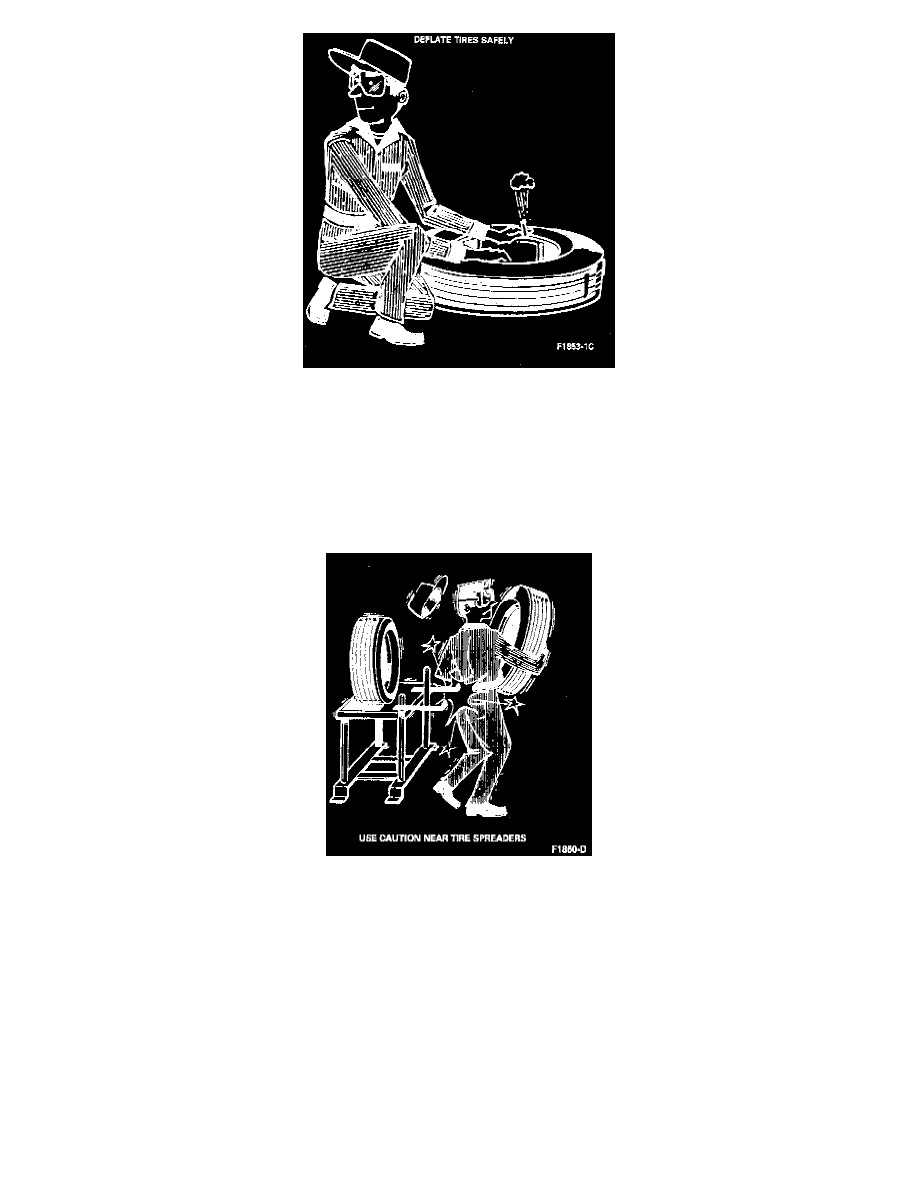F 350 4WD Pickup V8-351 5.8L VIN H EFI (1997)

^
When deflating a tire, reduce the pressure as much as you possibly can by pushing the valve core plunger. Only then should you remove the valve
core. Keep your eyes away from the valve.
^
Use only standard tire mounting tools and equipment. The use of makeshift tools, screwdrivers or pliers to force tires on or off rims or wheels is
dangerous. This can help prevent cuts and will make it unnecessary to use a mallet for unseating the tire beads.
^
Always lubricate tire beads to ensure sealing on rim with Rubber Lubricant D9AZ-19583-A or equivalent that meets Ford specification
ESR-M99B135-A.
^
The Rotunda Deluxe Tire Changer 104-00291 or equivalent includes a bead seater/inflator using an automatically adjustable inflation ring, which
aids in properly seating the bead for inflation. Also included are shims to allow 16- and 17-inch tires to be mounted. If not adjusted properly,
wheels can be damaged. To operate the Rotunda Ore Changer properly, follow its provided instructions.
^
Inspect tire and perform necessary service. A Rotunda Tire Spreader 104-00111 is very helpful, but use care when working around it. Keep the
spreader arms closed when the machine is idle.
^
Inspect and replace damaged or corroded parts. Abuse during road operations or in mounting tires can cause damage that may weaken the parts.
Parts that are excessively corroded are weakened. Always inspect for and replace damaged or heavily rusted parts.
^
Inspect and remove light rust and other foreign matter. Accumulation of such material on the engagement surfaces of the rim base and side can
prevent the proper fit of these parts. Use of a rust preventative during mounting will minimize rust.
^
Tires and rims often require a buffing operation before being mounted once the regular repairs have been made.
CAUTION: Always wear safety goggles or a face shield when performing any buffing operation.
^
Avoid hammering rims with steel hammers. Small bits of steel may be broken off the hammer or rim, flying into the eyes, face or body. Always
wear safety goggles and use rubber-covered, steel-headed hammers wherever possible. Only rubber mallets should be used on tires, although with
modern tire-changing equipment no pounding is necessary.
^
Stand as far as possible from the valve stem while inflating tires. Avoid a position where the face or body is immediately over the work being done
on any tire in which there is pressure.
^
Always use a safety cage, such as Rotunda Inflation Chamber 104-00104 or equivalent, or portable safety device, while inflating tires. Protect
